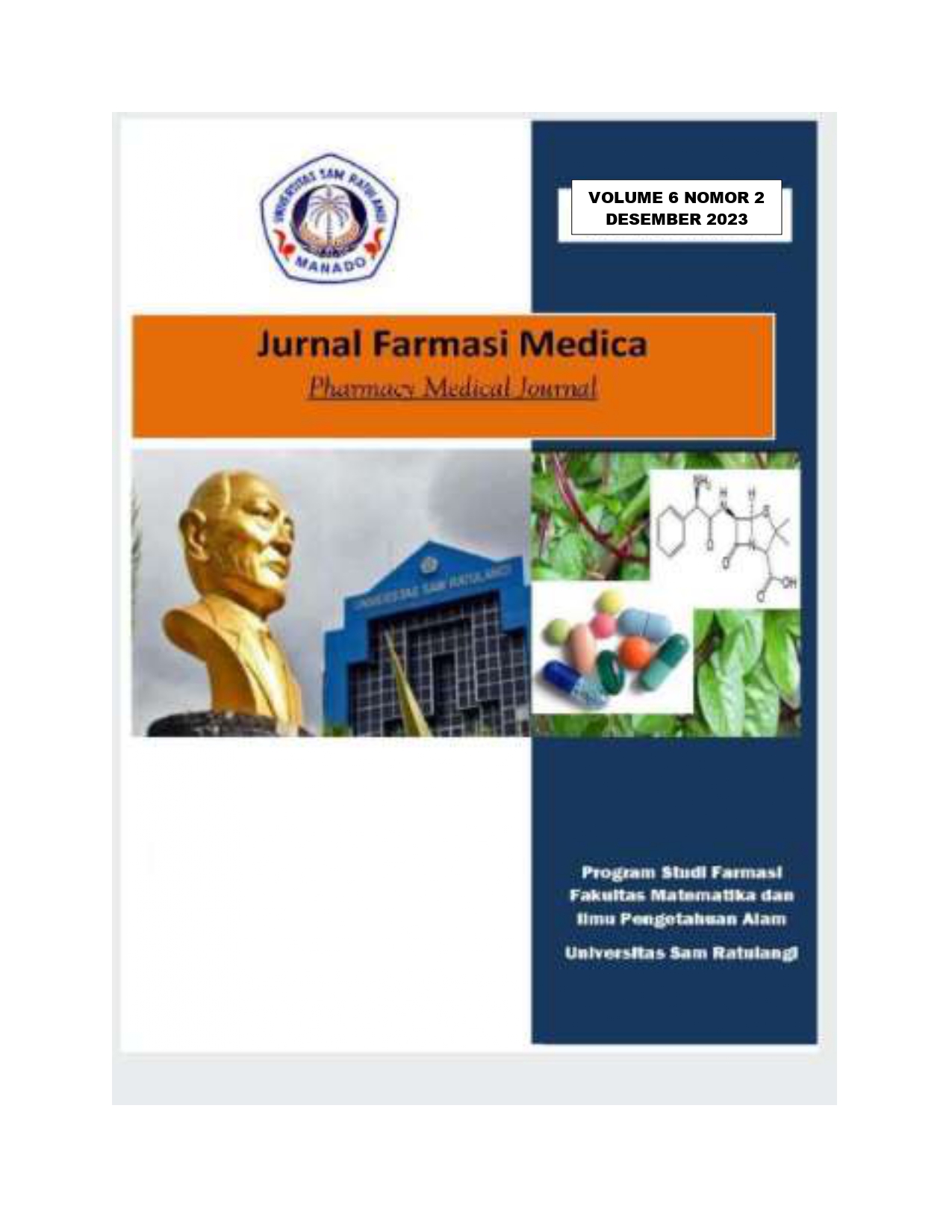UJI AKTIVITAS ANTIOKSIDAN, ANALISIS TOTAL FENOL, FLAVONID DAN TANIN DARI EKSTRAK BUAH SALAK
DOI:
https://doi.org/10.35799/pmj.v6i2.52373Abstract
Diabetes mellitus (DM) is a global problem that affects many people and causes high morbidity and mortality rates. The pathogenesis of DM is linked to the influence of free radicals, and various studies have been conducted to overcome this problem by utilizing potential natural materials that are available and have medicinal effects. North Sulawesi has a variety of potential plants and fruits that can be utilized for health, one of which is snake fruit. This study aims to determine the antioxidant activity, phenol content, flavonoids, and tannins in salak fruit extract. The research method used was maceration using 96% ethanol solvent, then evaporated to obtain a thick extract. The extract was then tested for total phenolics, flavonoids and tannins using a uv-vis spectrophotometer. Total phenolic content was determined using Folin-Ciocalteu reagent with gallic acid as a comparator. Total flavonoid content was determined with quercetin using AlCl3 reagent. Tannin content was determined with tannic acid. The results showed that the total phenolic content of salak fruit extract was 29.44 ± 1.02 mg Gallic Acid Equivalent (GAE)/g extract, while the total flavonoid content was 8,609 ± 1.69 mg Quercetin Equivalent (QE)/g extract. And the tannin content was 0.08184 ± 0.02 mg tannic acid equivalent (TAE)/g extract. The IC50 value of salak fruit extract is 22.16 which is included in the strong antioxidant category. Based on these results, salak fruit has the potential to be developed into pharmaceutical preparations that can be used to prevent or treat degenerative diseases.
Downloads
Published
Issue
Section
License
Copyright (c) 2023 Olvie Syenni Datu, Julianri Sari Lebang, Utami Sasmita Lestari

This work is licensed under a Creative Commons Attribution-ShareAlike 4.0 International License.



